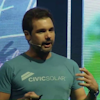About this course
Students will learn to quantitatively assess the value of a project at all stages of development, and measure that value from the perspective of a developer, investor, and customer with a partnership flip. Students will learn to calculate project returns (IRR and NPV), set PPA prices (with and without escalators), calculate the value of tax benefits, including MACRS depreciation and the ITC, and assess the value and timing of non-federal subsidies. Students will also learn the importance of workbook organization and information presentation.
Learning Objectives
- Learn how to quantitatively assess the value of a project at all stages of development and how to measure that value from the perspective of a developer, investor, and customer with a partnership flip
- Learn to calculate project returns (IRR and NPV)
- Learn how to set PPA prices (with and without escalators)
- Learn how to calculate the value of tax benefits, including MACRS depreciation and the ITC
- Learn how to assess the value and timing of non-federal subsidies
- Learn the importance of workbook organization and information presentation
This course is included in this bundle
Course outline
Welcome • 2 assignments
Orientation Materials
- Set up email notifications and your student profile
- Introduce yourself on the discussion board
Module 1 • 9 assignments
Introduction to Modeling
HOMEWORK: Create a Lease vs. Buy Calculator for Any Project Site
- Course Overview (07:35 minutes) Preview
- Housekeeping (09:56 minutes) Preview
- Planning and Organizing (20:40 minutes)
- Homework Assignment Description and File Upload
- Solar Modeling Class 1 Homework Sample - Site Lease vs. Buy (Excel) (.xlsx)
- Week 1 Presentation Slides (.pdf)
- Solar Model with 8760 and Cash Flow v1.7 (.xlsx)
- Video Recording of Class Call, 4/8/22 (56:48 minutes)
- Video of Class Call on June 13 2022 (58:47 minutes)
Module 2 • 10 assignments
Understanding Key Concepts
- Model Tour - Overview and Dashboard (19:23 minutes)
- Model Tour - Solar Production and Revenue (16:02 minutes)
- Model Tour - Partnership Flip and Customer Analysis (25:35 minutes)
- Model Tour - Unstructured and EBITDA (20:31 minutes)
- Homework Assignment - Unstructured Model (.pdf)
- Homework Assignment - File Upload
- Supplemental Video - Auditing & Correcting a Name for Insurance Calculations (08:40 minutes)
- Solar Model with 8760 and Cash Flow Template for Homework v1.6 (.xlsx)
- Partnership Flip Overview (.pdf)
- Class Call Recording 02/11/22 (59:20 minutes)
Module 3 • 8 assignments
Modeling and Analysis, Part 1
HOMEWORK: Create an Unstructured Model of a Solar Project using the provided template
- Modeling Overview: 12 Basic Commands, Functions, and Formulas - Part 1 (36:07 minutes)
- Modeling Overview: 12 Basic Commands, Functions, and Formulas - Part 2 (18:45 minutes)
- Modeling Overview: 12 Basic Commands, Functions, and Formulas - Part 3 (15:22 minutes)
- Modeling Overview: Four Important Features or Tools (28:31 minutes)
- Week 3 Homework (.pdf)
- Homework Assignment - File Upload
- Solar Model - 12 Basic Commands Formulas and Functions (.xlsx)
- Class Call Recording 02/18/22 (01:02:07 hours)
Module 4 • 10 assignments
Modeling and Analysis, Part 2
HOMEWORK: Create a Partnership Flip with provided template; goal seek a PPA price.
- Depreciation (28:06 minutes) Preview
- Presentation Slides - Depreciation (.pdf)
- Depreciation Example (.xlsx)
- Understanding and Modeling the Partnership Flip (34:58 minutes)
- Presentation Slides - Partnership Flip (.pdf)
- Leverage (34:07 minutes)
- Presentation Slides - Leverage (.pdf)
- Leverage Example (.xlsx)
- Complete & Upload the Customer Analysis Worksheet in your Template Model.
- Class Call Recording 02 25 22 (01:00:49 hours)
Module 5 • 6 assignments
Build and Submit Your Own Project Modeling Tool
- Upload Your Modeling Tool
- Class Call 5 - Related Article
- Audio recording of Class Call, 03/20/20
- Audio recording of Class Call, 03/20/20
- Audio recording of Class Call, 03/20/20
- Audio recording of Class Call, 03/20/20
Conclusion • 4 assignments
Feedback and Additional Resources
- 1 Year of Access to Course Materials
- Feedback: 2-minute Exit Survey
- Consider Joining as a HeatSpring Member
- Certificate of Completion: Request a Certificate
Instructor

Chris Lord
Christopher J. Lord is the Managing Director of CapIron, Inc., a firm focused, among other things, on helping clients plan, structure and close financings involving renewable energy projects, including Distributed Generation and Utility-Scale Projects. Mr. Lord graduated from Cornell Law School, and practiced corporate law in firms, and in-house, for over 25 years. He...
Frequently asked questions
Full FAQHow does this course work?
How is this course different from the Solar Executive MBA Training?
How long do I have access to the materials?
How applicable is this course to students outside of the United States?
For the most part, we won’t cover the specific subsidies and tax treatments for countries other than the US, but the bulk of the material is readily applicable to all solar projects regardless of the country.





